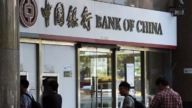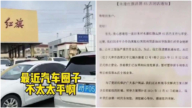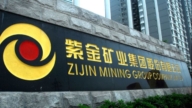【新唐人2014年02月27日讯】中国经济的震荡此起彼伏,危机重重。截至去年底,中国非金融类公司的债务总额创12万亿美元新高,为国民生产总值GDP的120%。那么导致中国企业债务规模增高的原因是什么?这反映出中国怎样的经济现状?今年又是企业债券偿债的高峰年,那么会发生大规模的违约吗?我们来听听专家的分析。
根据国际信评机构“标准普尔(Standard & Poor’s)”的调查,中国企业债务已飙上历史新高。截至去年底,中国非金融企业的未清偿银行借款及债券负债总额达12万亿美元,相当于中国国内生产毛额GDP的120%多。
据英国《路透社》调查,中国945家中大型非金融上市企业总负债,从2008年12月到去年9月,近5年期间,膨涨超过了260%,金额从1万8200亿元人民币暴增到4万7400亿元人民币。
美国南卡罗来纳大学艾肯商学院教授谢田:“现在的报告从08年到13年增长了260%,那实际上对于外界来说,可能是有点小小的吃惊,因为我们不知道它是怎么样、通过什么途径突然增长这么快呢,还是一直很多,但外界并不清楚。”
美国“南卡罗来纳大学艾肯商学院”教授谢田认为,中国企业债规模增长,实际上跟中国其他债务,如公共债务、政府债务、私人债务、民间债务一样,一直都是不透明的。他表示,如果这些数字是可信的,说明中国现在从政府到民间、到企业债务,问题已经相当严峻了。
北京《国情内参》期刊首席研究员巩胜利表示,中共政府,从中央到地方、再到最基层各级政府管理的7级构架,导致了中国企业运行的质量低,是中国企业债务规模增高的原因之一。
北京《国情内参》期刊首席研究员巩胜利:“这7级构架还是双重构架,有政府的机构以外,还有一个党的运行,那么它就成了经济运行、企业运行、营运运行,包括资源性运行,包括资本运行、银行运行、货币运行,都付出了非常高昂的成本。”
《路透社》报导的数据显示,中国的电力和建材企业,是所有公司中债务与资金杠杆最高的,截至去年9月底,这两个行业的债务都是股权的两倍。
日前发布的《2013年中国500强企业报告》显示,以500强为代表的中国企业高杠杆率,显然已处于一种不可持续的状态。报告指出,如此高的债务杠杆模式非常危险。
谢田表示,企业的债务过高、杠杆率增高,如果是经济还在快速增长就不是问题,对于企业的扩张、企业的发展是有益的。
谢田:“但是中国企业不是真正按风险状况来运作的、也不是独立运作的,它是政府行为,在进行投资、扩资或融资的时候,往往不按照市场规律和市场的需求来做,而完全按照长官的意志或地方政府官员、或共产党官员公布假的、有水分的GDP来做。”
“标普”董事总经理Christopher Lee表示,中国的企业债膨胀的主要推动力,是2008年金融危机后,政府推出的4万亿刺激政策。
巩胜利:“中国经济现在驱动的能力就是靠货币投放,不投入货币的话,GDP7%(增长)也不能够完成。所以中国这个投资很麻烦,一个是货币投放量最大,面临着通货膨胀、货币贬值。所以货币投放量很大也是一大灾难。”
今年初,中共发改委表示,今年是企业债券偿债高峰,预计将有1000亿元的城投债券将到期必须兑付。尽管分析师预期短期内中国不致爆发信贷危机,但分析师表示,一些财务杠杆最重的中国产业企业,都正在纷纷抛售资产及企业整并,以避免自身债务违约。
不过,“标普”驻香港大中华企业评级董事总经理李国宜预警,中国会有更多的企业债务违约出现,原因是当地流动性紧缩,借贷成本已开始攀升。
而随着美联储缩减QE政策,热钱开始逐步离开中国,这也增加了企业借新债还旧债的难度,加大了中国的违约风险。
采访编辑/易如 后制/周天
China’s Company Debt Soars US$12 Trillion
Has Hidden Economy Risks
China’s financial debt has continuously hit record levels.
Reuters reported that at the end of last year, Chinese
non-financial companies,
held a total debt of about US$12 trillion.
(72 Trillion yuan)
It equals to over 120% of GDP ( Gross Domestic Product).
What’s the cause of the high debt? And what does it reflect in
the current economic status?
This year is a peak year for companies to repay their debt,
Will a large default possibly occur?
Let’s take a look.
Standard & Poor’s (S&P), estimates that growth in Chinese
company’s debt, has been unprecedented.
At the end of last year, Chinese non-financial companies held
a total outstanding of bank borrowing and bond debt,
of about US$12 trillion.
It equals to over 120 percent of GDP.
non-financial firms,
showed total debts have soared by more than 260 percent
between December 2008 and September 2013.
The amounts increased from 1.82 trillion yuan (US$294.4 billion)
to 4.74 trillion yuan (US$777.3 billion).
Xie Tian, Professor at Aiken Business School, University
of South Carolina:
“Thomson Reuters’s report says, total debt has increased
by 260 percent.
It is a big shock for outsiders, as we don’t know how and
by which way it suddenly rose so rapidly?
Or has it always been this much? Yet we figure,
the outside world has no knowledge of it.”
Xie Tian believes that the scale of Chinese corporate debt
growth is the same as other debt –
be it public debt, governmental debt, private debt, etc.
They have always been opaque.
If the figure is reliable, it indicates that the governmental
and the company’s debt have reached very serious levels.
Gong Shengli, a leading researcher of financial intelligence in
Beijing, says that from the central to local regime,
and to seventh level of management, they operated the company
in a low quality environment,
it is one of the reasons to have caused the growth of
Chinese company’s debts.
Gong Shengli: “The seventh level of management
is a double structure: government and the Communist Party.
It’s caused high cost in the operations of economy, companies,
logistics and resources.
It also includes capital running, bank operation and
currency engagement. They are all paying a very high cost.”
“Thomas Reuters data shows, China’s power producers
and construction materials firms,
are among the most highly levered in the world’s
second-largest economy.”
“With each Sector reporting twice as much debt
as equity by the end of September.”
The recently released 2013 China Top 500 Enterprises Report,
shows 500 firms represent China’s enterprises with high leverage.
Obviously it is in an unsustainable state.
The report points out that such a high leverage
model is very dangerous.
Xie Tian says that the company’s debt is too high, and also
the leverage ratio has increased.
If the economy is growing fast, it is not a problem,
it will be of benefit to any company’s expansion and development.
Xie Tian: “However, China’s company is not really operated
and based on risk status, neither is it independent.
It is controlled by the government.
When it needs investment or the expanding of funds,
it doesn’t follow the marketing rule or market’s demands.
But to follow orders from leaders and local government,
or to follow the false GDP provided by the Communist officials.”
According to Reuters’ report, Christopher Lee, managing
director of S&P (Standard and Poor),
says that exacerbating China’s corporate troubles,
has been the questionable use of four trillion yuan
in stimulus, following the global financial crisis in 2008.
Gong Shengli: “China’s economy is now driven by the
money supply.
Without an injection of money, the growth of 7% GDP
cannot be achieved.
Thus China’s investment is indeed very troublesome:
The amounts of money being injected is the largest, which faces
the inflation and devaluation issues.
So a great amount of injection would also be a disaster.”
Early this year, National Development and Reform Commission,
said this year is a peak year to repay the debt.
It is estimated that 100 billion yuan of city bonds needs
to be paid back.
Although analysts say China won’t break out of credit crisis
in a short term.
Some state-run enterprises with heavy financial leverage are being
sold of its assets,
or they are merging with other companies to avoid
defaulting the debt on its own.
Christopher Lee says that there will more defaults appearing.
Due to tightened liquidity and of lending going forward.
Following the US Fed QE’s reduction,
the hot money has gradually moved out from China,
which has increased the difficulty for companies to lend
the money to repay the old debt,
thus the defaulting risks are even greater.
Interview & Edit/Yiru Post-Production/Zhoutian





























